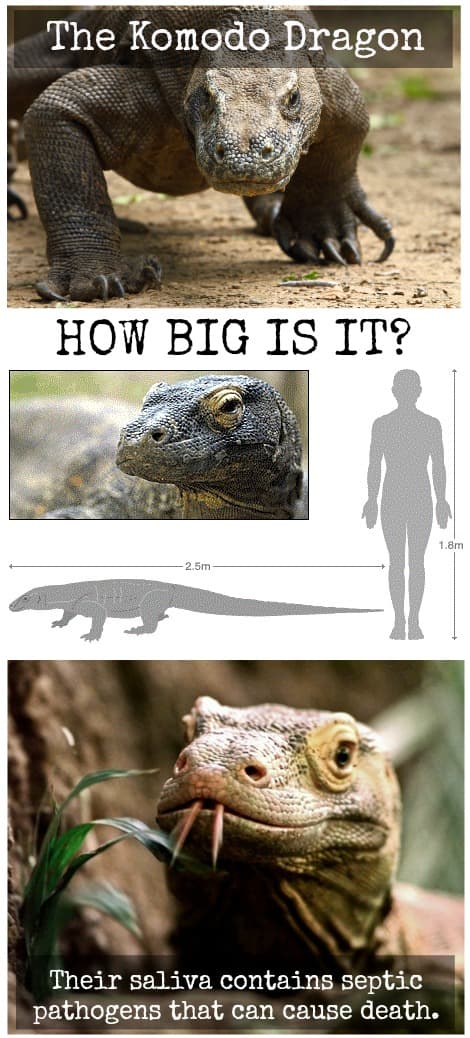Over the past several million years, the komodo dragon has reigned supreme in the Indonesian islanders (fossils very similar to this species have been found in Australia dating to greater than 3.8 million years ago); however, surprisingly, these amazing creatures have only been known to humans for the last century. They are truly the behemoths of the reptile world, with the largest weighing in at whopping 166 kg (365 lbs) and reaching lengths of about 3 meters (10 ft).
And komodo dragons are not only intimidating because of their size. With strong legs, thick tails, and a broad build, it's actually their bite that is the most sinister. You see, the komodo has sharp, serrated teeth that are perfectly suited for stripping flesh from bone (not so fun times if it happens to be your flesh). It is said that one 100 pound dragon can consume 80 pounds of meat - almost their entire body weight - in only a few minutes. Furthermore, they are literally walking garburators and will eat any animal, living or dead, bone and all. Whereas most large predators leave about 40% of their kill behind (as they don't eat bones, hide, etc.) the komodo only leaves behind about 12% of its prey.
Worst of all is their venom and saliva, the latter of which is known to have septic pathogens in it, and over 50 different strains of bacteria that reside there (some articles claim there are more than 80 strains). Once bitten, the victim typically dies within 24 hours due to poisoning and blood loss. This is especially handy for the komodo. When an animal attempts to flee from the initial attack, all the komodo needs to do is wait. Ultimately, the venom decreases blood pressure and increases blood loss.
The komodo can also see you from a distance of about 300 meters (980 ft). And despite their short and stocky nature, they are pretty fast. On average, the komodo can run up to 20 kph (13 mph). Instead of chasing the prey down though, it prefers to wait it out once the prey has been bitten, and slowly track the prey down using its advanced sensory organ, known as the vomeronasal organ (also called Jacobson's organ). Oddly enough, the creature can literally taste the air molecules with its long, forked tongue. It methodically sways its head side to side, just to make sure it doesn't lose the scent of the creature as it waits patiently for the prey to become too weak to walk any further.
And they do attack humans (as we said, they eat nearly anything). While their diet (as adults) mostly consists of deer, they love carrion, and have been observed digging up dead human bodies in cemeteries. Despite all of these seemingly scary attributes, these dragons are almost revered by locals and anyone else lucky enough to see them. Perhaps this is because they are reminiscent of a different epoch in Earth's history—when large reptiles ruled the planet.
Unfortunately, the komodo dragon is also amazingly rare. They take around 9 years to mature and can live for 30 years. They are a protected species, and a colony of just about 3000-5000 still live today.
Share This Article
